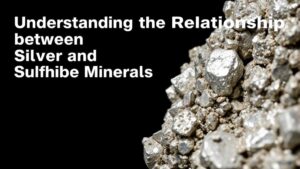Exploring Gold-Bearing Gravels in Glacial Till Deposits
Exploring Gold-Bearing Gravels in Glacial Till Deposits
The pursuit of gold has captivated humankind for centuries, not only because of its intrinsic value but also due to its role in our economic systems and cultures. Among the various geological settings conducive to gold accumulation, glacial till deposits present a unique opportunity to discover substantial gold-bearing gravels. This article delves into the characteristics of glacial till, the processes that lead to gold deposition, and practical methods for exploration.
Understanding Glacial Till Deposits
Glacial till is an unsorted mixture of sediments deposited directly by glaciers. It consists of a range of particle sizes, from clay to boulders, and is formed through a combination of mechanical weathering and transport processes. As glaciers advance and retreat, they erode the underlying bedrock, entraining minerals and rock fragments, including gold.
The primary characteristics of glacial till include:
- Unsorted Material: Unlike river sediments, glacial till does not exhibit layering, making it a complex matrix for exploration.
- Varied Composition: The mineral composition can vary significantly, which is important when evaluating potential gold sources.
- Indicator Minerals: The presence of certain minerals, such as quartz and pyrite, may suggest the proximity to gold deposits.
Formation of Gold-Bearing Gravels
Gold-bearing gravels can form in several ways, but the primary contributors include mechanical erosion and sediment transport by melting glaciers. During the glacial periods, gold that was previously locked in bedrock can be liberated and transported downhill as glacial ice moves. Once the glaciers melt, the sediments–including gold–are left behind in stratified gravel beds.
Key processes involved in the formation include:
- Weathering: Physical and chemical weathering of gold-bearing rocks releases gold that can be transported in glacial till.
- Mechanical Transport: As glaciers advance, they carry previously weathered minerals, including gold, leading to concentration in downstream deposits.
- Post-Glacial Fluvial Action: As the glaciers recede, river systems can rework the glacial till, redistributing gold and forming secondary deposits.
Exploration Techniques
Exploring glacial till deposits requires a comprehensive approach that incorporates both geological assessments and physical sampling techniques. Some effective exploration methods include:
- Geological Mapping: Identifying areas with historical glacial activity and mapping sediment distribution can guide exploratory efforts.
- Soil Sampling: Taking samples from various layers of till can help identify the concentration of gold and other minerals.
- Panning and Sluicing: Traditional methods such as panning can be employed to separate gold from sediment samples, providing immediate visual results.
Case Studies and Real-World Applications
Several notable regions exemplify successful exploration efforts in glacial till deposits. For example, the Klondike Gold Rush in the late 19th century saw thousands of prospectors sifting through glacially-derived sediments in the Yukon, Canada. Here, gold was found in both primary and secondary deposits as glaciers retreated.
Another area of interest includes the Canadian Shield, which showcases extensive glaciated terrain rich in gold-bearing gravels. Modern exploration utilizes advanced geophysical techniques, such as ground-penetrating radar and electromagnetic surveys, to identify gold concentrations hidden beneath the surface.
Challenges and Considerations
While the potential for discovering gold in glacial till is significant, several challenges must be addressed during exploration:
- Environmental Concerns: The impact of exploration and mining activities on local ecosystems should be evaluated and minimized.
- Regulatory Hurdles: Potential explorers must navigate complex regulations concerning land use and mineral rights.
- Resource Allocation: Adequate funding and equipment are essential for conducting thorough and effective exploration.
Actionable Takeaways
Exploring gold-bearing gravels in glacial till deposits is both an exciting and challenging endeavor. By understanding the geological processes, utilizing effective exploration techniques, and learning from historical case studies, modern prospectors can successfully identify and mine gold-rich areas. It is crucial to approach these activities responsibly, considering environmental and regulatory factors to promote sustainable exploration practices.
For those interested in getting started, it is recommended to:
- Conduct thorough preliminary research on local glacial history.
- Engage with geological specialists to analyze sediment samples.
- Stay informed about regulatory requirements and best practices in mineral exploration.


